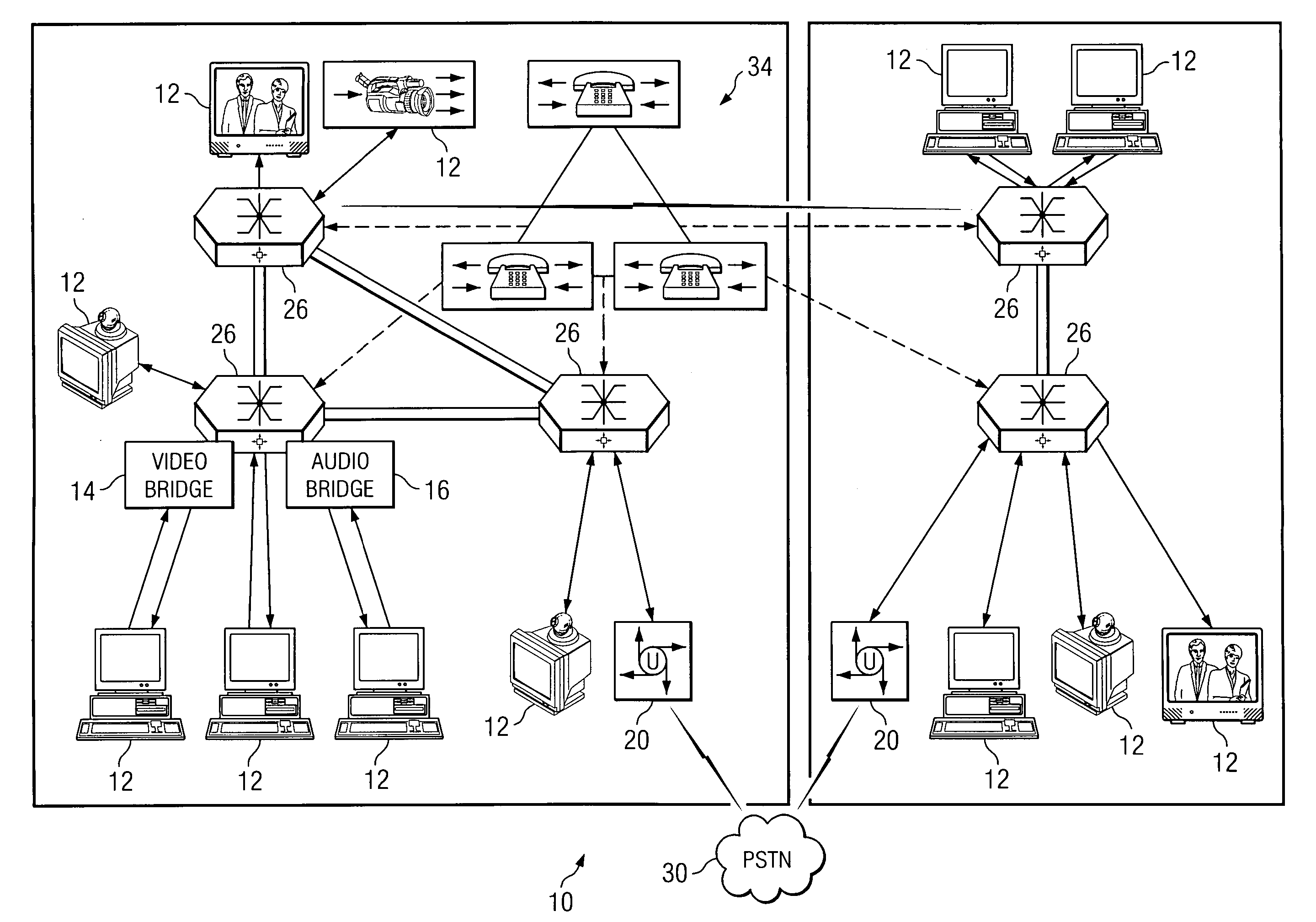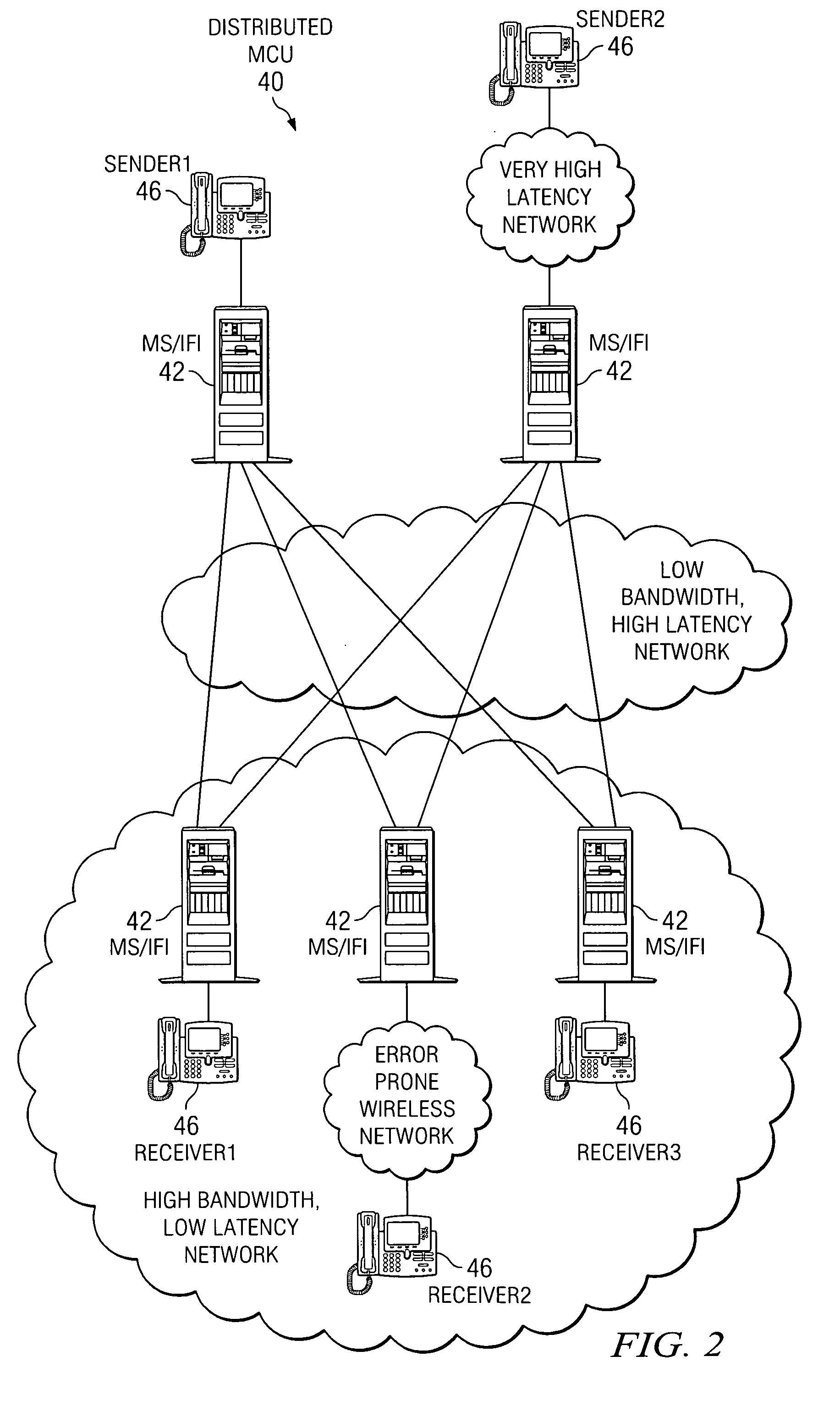System and method for performing distributed multipoint video conferencing
a multi-point video and video conferencing technology, applied in the field of communication, can solve the problems of network architecture and the field of video conferencing have grown increasingly complex in the communications environment, and the challenge is significant for network operators, component manufacturers, and system designers, so as to reduce the disadvantages and problems associated
- Summary
- Abstract
- Description
- Claims
- Application Information
AI Technical Summary
Benefits of technology
Problems solved by technology
Method used
Image
Examples
Embodiment Construction
[0018]FIG. 1 is a simplified block diagram of a communication system 10 for communicating data in a network environment. Communication system 10 includes multiple end points 12, which are illustrated in FIG. 1 as representative of various devices and components (e.g. audio internet protocol (IP) phones, video phone appliances, personal computer (PC) based video phones, and streaming clients). Communication system 10 may also include a plurality of gateways 20 that provide connectivity to each other via a public switched telephone network (PSTN) 30. Communication system 10 may also include a plurality of media switches 26 (which may be abbreviated as MS or MSs herein in this document) that may be coupled to each other, gateways 20, and various end points 12. Additionally, communication system 10 may include a set of call agents 34 (e.g. a centralized call manager) that may be coupled to media switches 26. In addition, communication system 10 may include any number of suitable applica...
PUM
 Login to View More
Login to View More Abstract
Description
Claims
Application Information
 Login to View More
Login to View More - R&D
- Intellectual Property
- Life Sciences
- Materials
- Tech Scout
- Unparalleled Data Quality
- Higher Quality Content
- 60% Fewer Hallucinations
Browse by: Latest US Patents, China's latest patents, Technical Efficacy Thesaurus, Application Domain, Technology Topic, Popular Technical Reports.
© 2025 PatSnap. All rights reserved.Legal|Privacy policy|Modern Slavery Act Transparency Statement|Sitemap|About US| Contact US: help@patsnap.com



